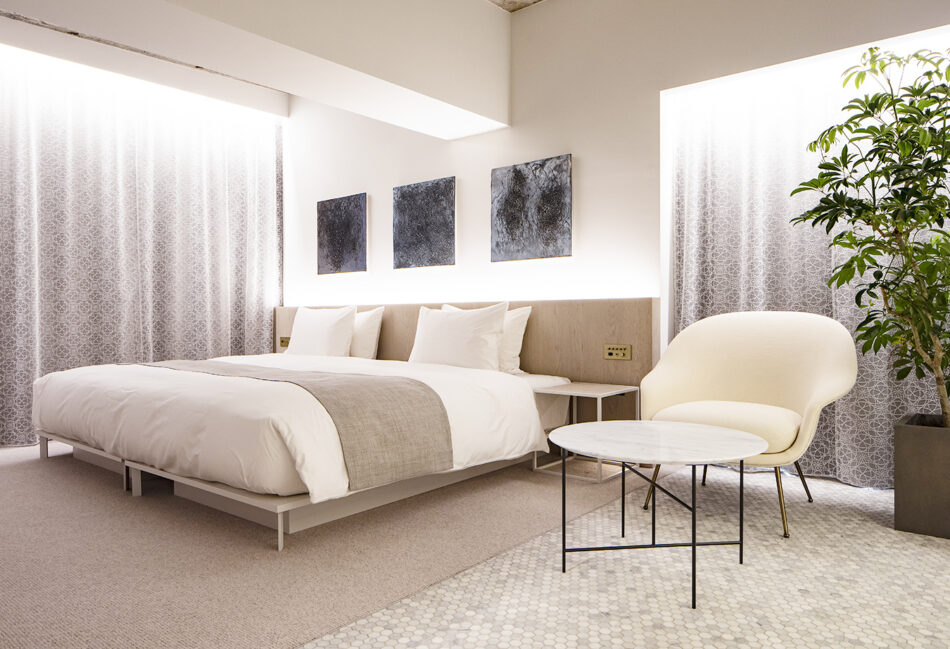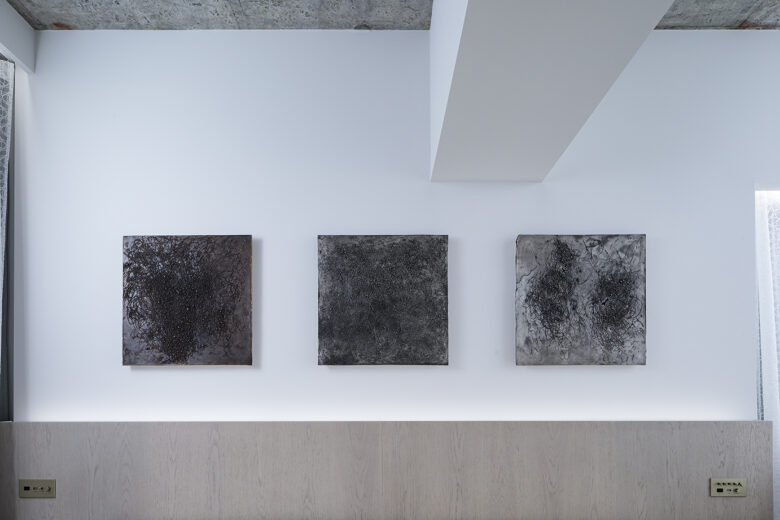ROOM 14 MINEKI MURATA


Born in Maebashi, in 1979. Graduated from the Department of Sculpture, Faculty of Art, Tama Art University in 2005.
Major solo exhibitions include “+” (2017, Gallery HASHIMOTO, Tokyo); “Vision Inside” (2018, rin art association, Gunma); “Borderman” (2019, Art Center Ongoing, Tokyo); “effect” (2021, rin art association, Gunma); “share” (2023, Tama Art University Sculpture Gallery, Tokyo); “Transition”(2023, Maebashi Galleria Gallery 2, Gunma); “out-of-body” (2024, rin art association, Gunma).
Major group exhibitions include TWO STICKS Think Tank Lab Triennale” (2015, The Museum of Architecture in Wroclaw, Poland); “VOCA2015-The vision of contemporary art” (2015, the Ueno Royal Museum, Tokyo); “Art of Gunma 2017 – Place for modern art in local society” (2017, The Museum of Modern Art, Gunma); “Singing in the Rain” (2019, BankART Station, Kanagawa); “The Place of Encounter – 8 Artists of Shiroiya Hotel” (2020, Phillips, Tokyo); “New Horizon: Vision of the Future” (2023-2024 Arts Maebashi, Gunma).
Murata performed in and out of Japan at exhibitions such as “Genjin: Takuzo Kubikukuri x Mineki Murata x Fuyuki Yamakawa” (2016, Maebashi Art Culture Brick Warehouse, Gunma); “2019 Live International Performance Art Biennale” (2019, Canada).
Received the 21st Jomo Art and Culture Award (2023).
As a performance artist, Murata explores physical activities around the idea of kaku, a Japanese word which can variously be translated as “to write”, “to draw”, and “to scratch”. His performances are unforgettable. With preverbal growls, he frantically kaku-s (writes, draws, scratches) on supports like wood and paper with ballpoint pens and other implements. The supports are gradually carved away and Murata grows more fatigued, but there is no beginning or end in the manner of a story—only a repetition of the act of kaku. The works created, simultaneously “drawn” and “scratched away”, have the qualities of both painting and sculpture. At the end of each performance, the work is presented as a painting or installation with a hole in it that goes beyond marks or traces to show the formerly concealed scenery on the other side, like a wind cave wrenched open.
Murata has created art by inscribing the act of kaku on various materials. For this work, he used a ballpoint pen on a wax tablet, then used a casting process to create a finished bronze. In recent years Murata’s work has shown new development in his incorporation of the technique of woodcut printing. Looking closely and listening carefully to the inscribed traces, the viewer can discern an accumulated repetition beginning with a single line, gradually becoming a spiral and then being replaced by metal. The result suggests a high note resounding into the distance. The small vibrations created by drawing slowly develop a larger resonation as they echo back and forth between Murata’s body and the supporting material.

